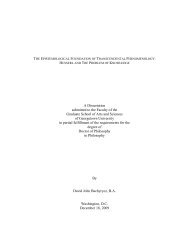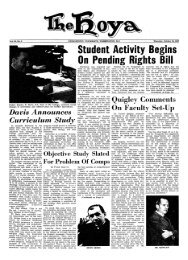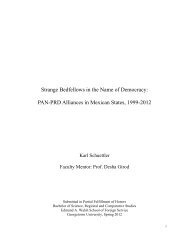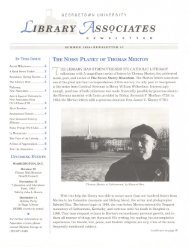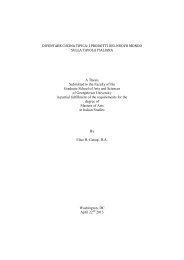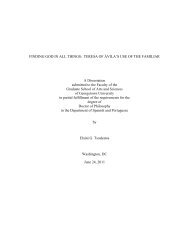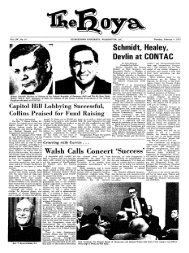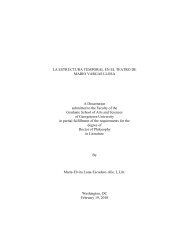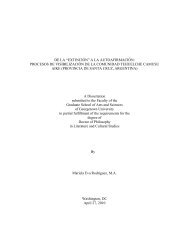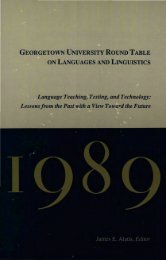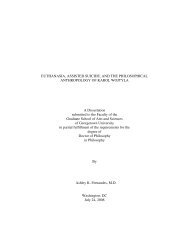LO MONSTRUOSO EN DOS NOVELAS CONTEMPORÁNEAS: UNA ...
LO MONSTRUOSO EN DOS NOVELAS CONTEMPORÁNEAS: UNA ...
LO MONSTRUOSO EN DOS NOVELAS CONTEMPORÁNEAS: UNA ...
Create successful ePaper yourself
Turn your PDF publications into a flip-book with our unique Google optimized e-Paper software.
Dentro de este clima de poder en que se percibe el erotismo, el mundo que<br />
retrata el discurso de la locura parece ser, en cierto modo, una materialización de varios<br />
aspectos de la psicología humana según la teoría psicoanalítica de Sigmund Freud:<br />
Freud asks, perhaps with tongue in cheek, “If one imagines<br />
[civilization’s] prohibitions lifted –if, then, one may take any woman<br />
ones please as a sexual object, if one may without hesitation kill one’s<br />
rival for her love or anyone else who stands in ones’ way, if, too, one can<br />
carry off any of the other man’s belongings without asking –how<br />
splendid, what a string of satisfactions life would be!” (Nicholi 100-101)<br />
En ese sentido, extensas partes de la novela nos describen un mundo<br />
inmisericorde, en el cual todos los personajes buscan satisfacer su propio interés sin<br />
reparar en los demás o en abierta oposición a ellos, como si estuvieran impelidos<br />
inconsciente y exclusivamente por ese “cauldron of seething excitations” o “instinctual<br />
cathexes seeking discharges”, frases con las que Freud describe la naturaleza del Id.<br />
Creatura y creador de lo monstruoso<br />
Al reflexionar sobre la idea de la monstruosidad en el capítulo anterior,<br />
propusimos, con el fin de comprender a cabalidad este concepto, una sencilla división<br />
metodológica: considerar dos monstruosidades, una interna y otra externa. Frente al<br />
150



